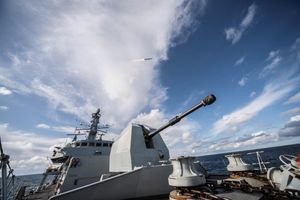UK's new 'world class' missile system enters into service
An £850 million missile system that will protect the Royal Navy’s new aircraft carriers has officially entered service, the Defence Secretary has announced.

Gavin Williamson said the 'world class' Sea Ceptor system would provide a shield against airborne threats – including hostile combat jets, helicopters and other missiles.
It will be carried by the Royal Navy’s Type 23 frigates, and has been successfully demonstrated through a trials and test firing campaign that started last year.
Mr Williamson, who is the MP for South Staffordshire, said: “Sea Ceptor will protect our nation against the intensifying threats we face today and in the future, giving our ships a powerful shield against everything from supersonic missiles to enemy fighter jets.
“Fitting our warships with this ground-breaking technology not only protects our Navy but shows we are world leaders at sea. HMS Argyll will be the first ship to deploy with this cutting-edge system when she heads to support peace and security in the Asia Pacific region later this year.”
Sea Ceptor has been designed and manufactured by arms manufacturer MBDA and is directly supporting 600 British jobs as part of the Team Complex Weapons partnering agreement between the Ministry of Defence and MBDA.
It is considered a major improvement on the existing Seawolf missile system, which is being phased out.
HMS Montrose recently became the third ship to test fire the system, and successfully intercepted a fast-moving drone target.
Within seconds of the missile bursting from the ship’s silo, the simulated threat was destroyed.
Commander Conor O’Neill, the Commanding Officer of HMS Montrose, said: “I am extremely proud of my ship’s company for their professional attitude which enabled the test firing to go so smoothly.
"This missile system represents a vastly-improved capability for the Royal Navy, and puts us ahead of the game in being able to defend ourselves and our new aircraft carriers from threat.”




